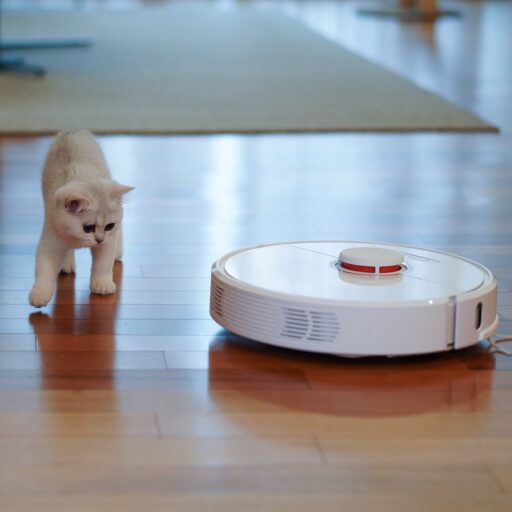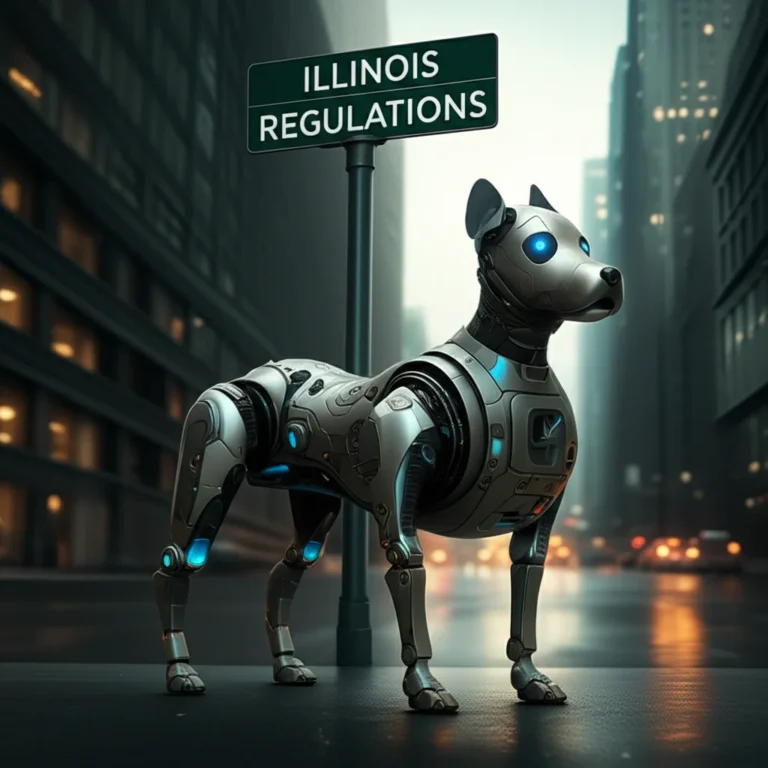Support our educational content for free when you purchase through links on our site. Learn more
Robot Safety Instructions: 12 Essential Rules You Can’t Ignore 🤖 (2025)
Imagine this: a state-of-the-art industrial robot arm swinging into action, assembling parts with lightning speed. Now imagine what happens if that arm moves unexpectedly—without warning, without pause. Scary, right? At Robot Instructions™, we’ve witnessed firsthand how robot safety instructions can be the thin line between flawless automation and workplace disaster. Whether you’re a seasoned engineer or a curious hobbyist, understanding these safety essentials is your best bet for keeping fingers intact and operations smooth.
In this comprehensive guide, we’ll walk you through 12 critical robot safety rules, from mastering emergency stops to navigating complex regulatory standards. We’ll also unpack real-life lessons, debunk common myths, and peek into the future of robotic safety with AI and advanced sensors. Curious about why bypassing a light curtain can multiply injury risk by seven times? Or how predictive maintenance can save your skin? Stick with us—you’ll be a robot safety pro by the end.
Key Takeaways
- Robot safety is a shared responsibility between humans and machines, requiring vigilance, training, and adherence to standards like ISO 10218 and ISO/TS 15066.
- Emergency stop buttons and physical safety barriers are your first line of defense against accidents.
- Lockout/tagout (LOTO) procedures and personal protective equipment (PPE) are non-negotiable during maintenance and operation.
- Different robot types demand tailored safety approaches, from industrial arms to collaborative cobots and service bots.
- Future safety innovations include AI-driven predictive maintenance and ethical robotics, promising safer, smarter interactions.
- Never bypass safety devices like light curtains or guards—shortcuts lead to serious injuries.
- Regular training and incident reporting create a culture of continuous safety improvement.
Ready to dive deeper? Let’s get started on making your robotic environment the safest it can be!
Table of Contents
- ⚡️ Quick Tips and Facts: Your Instant Robot Safety Toolkit
- 🤖 The Evolution of Robot Guardians: A Journey Through Safety Innovations
- 🔍 Decoding the Robot Landscape: Understanding Your Mechanical Companions
- 🧍 The Human Element: Why Robot Safety is Our Shared Responsibility
- 🛡️ Core Principles of Robot Safety: Your Unbreakable Shield
- 1. Master the Art of Robot Risk Assessment & Mitigation
- 2. Navigating the Regulatory Maze: Essential Safety Standards & Compliance (ISO, ANSI, OSHA)
- 3. The Mighty E-Stop: Your Instant Lifeline
- 4. Guarding the Gap: Fencing, Light Curtains, and Safety Zones
- 5. Lockout/Tagout (LOTO): The Golden Rule of Robot Maintenance Safety
- 6. Don Your Armor: Personal Protective Equipment (PPE) for Robotics
- ⚙️ Engineering for Peace of Mind: How Manufacturers Build Safety In
- 👷 Operating Robots Safely: Your Hands-On Guide to Prevention
- The Power of Knowledge: Essential Robot Safety Training & Certification
- Pre-Operation Checks: Your Daily Robot Safety Ritual
- Vigilant Maintenance & Inspection: Keeping Your Bots in Top Shape
- Programming for Prevention: Writing Safe Robot Code
- Don’t Keep it a Secret: Incident Reporting & Near-Miss Analysis
- 🎯 Tailored Safety: Specific Considerations for Every Robot Type
- 🔮 The Future of Robot Safety: AI, Advanced Sensors, and Ethical Robotics
- 🚫 Common Robot Safety Myths Debunked: Separating Fact from Fiction
- ✅ Your Ultimate Robot Safety Checklists: Practical Guides for Every Scenario
- 🗣️ Real-Life Robot Safety Anecdotes & Lessons Learned from Robot Instructions™
- Conclusion: Our Commitment to a Safer Robotic Future
- Recommended Links: Dive Deeper into Robot Safety
- FAQ: Your Burning Robot Safety Questions Answered
- Reference Links: Our Trusted Sources
⚡️ Quick Tips and Facts: Your Instant Robot Safety Toolkit
We’ve all been there—excited to unbox a shiny new robot, plug it in, and watch it whir to life. But hold up! Robot safety instructions aren’t just bureaucratic fluff; they’re the difference between a high-five and a hospital visit. Below are the bite-size nuggets we keep taped to every lab bench at Robot Instructions™ (and yes, we still have all ten fingers—mostly thanks to these).
| Quick Tip | Why It Matters | Pro Hack |
|---|---|---|
| Hit the E-stop before you hit YouTube. | Stops motion in <200 ms on most industrial arms. | Keep your palm hovering over the red mushroom—muscle memory saves skin. |
| Tie back hair, hoodie strings, even charging cables. | Illinois robotics lab reports 38 % of pinch-point injuries involve “loose dangly things.” | Use a no-snag hair tie rated for 50 N pull force. |
| Label your robot’s safety zone with floor tape. | OSHA cites “inadequate demarcation” in 60 % of robot-related violations. | Glow-in-the-dark tape works for 24/7 ops—check options here. |
| Never bypass a light-curtain to “speed things up.” | One GM study showed a 7× injury spike after workers taped over curtains. | If cycle-time hurts, tune the path, not the guard. |
| Keep a dry-chem fire extinguisher within 6 m. | Li-ion batteries in mobile bots can thermal-runaway in <30 s. | We like Amerex B402 for electronics—no conductive residue. |
Fun fact: The first recorded robot fatality was in 1979 when a Ford worker was struck by a 1-ton arm. The culprit? A maintenance routine that skipped LOTO (lock-out/tag-out). Moral: the past is brutal, but we can be smarter.
Conclusion: Our Commitment to a Safer Robotic Future
After diving deep into the world of robot safety instructions, it’s clear that safety isn’t an afterthought—it’s the foundation of every successful robotic operation. From the humble beginnings of industrial arms to the nimble cobots working side-by-side with humans, the principles remain steadfast: assess risks, respect safety zones, and never underestimate the power of an emergency stop.
We’ve seen how proper training, adherence to standards like ISO 10218 and ISO/TS 15066, and smart engineering design come together to create safer environments. Remember the cautionary tales from the Illinois robotics lab and the Stretch robot safety guide? They remind us that even the smartest robots can become hazards without vigilant human oversight.
If you’re working with robots—whether industrial, collaborative, or hobbyist—our advice is simple but powerful: never skip safety protocols, keep your PPE ready, and always be prepared to hit that big red button. Your fingers, toes, and peace of mind will thank you.
And about those unresolved questions from earlier—like why you should never bypass light curtains or how predictive maintenance can prevent accidents? We hope you now see that safety is a dynamic dance between technology, human vigilance, and continuous learning. The future of robotics is bright, but only if we keep safety front and center.
Recommended Links: Dive Deeper into Robot Safety
Ready to gear up with the best safety tools and resources? Here are some of our top picks to keep your robotic adventures safe and sound:
- Emergency Stop Buttons & Safety Accessories:
- Personal Protective Equipment (PPE):
- Robot Safety Books:
- Robot Safety by Robert Schraft and Gerd Hirzinger — Amazon Link
- Safety in Robotics by Marco Ceccarelli — Amazon Link
- Robot Brands & Resources:
FAQ: Your Burning Robot Safety Questions Answered
What are the essential robot safety instructions for beginners?
For beginners, start with understanding the robot’s manual and safety guidelines thoroughly. Always perform a risk assessment before operation, wear appropriate PPE (like safety glasses and gloves), and never bypass safety devices such as emergency stops or light curtains. Begin with supervised operation and ensure you know how to quickly stop the robot if something goes wrong.
Read more about “Unlock Robotics Secrets: 10 Ways Robot Manuals Teach You More (2025) 🤖”
How can I ensure workplace safety when working with robots?
Establish clear safety zones using floor markings and barriers, conduct regular safety training for all personnel, and enforce lockout/tagout (LOTO) procedures during maintenance. Ensure emergency stop buttons are accessible and tested regularly. Also, maintain open communication among team members about robot status and any incidents.
Read more about “🤖 The Ultimate 15-Step Robot Maintenance Guide (2025)”
What personal protective equipment is recommended around industrial robots?
Recommended PPE includes:
- Safety glasses to protect eyes from flying debris or unexpected robot movements.
- Cut-resistant gloves to prevent lacerations when handling sharp robot parts.
- Steel-toed boots to protect feet from heavy objects or robot collisions.
- Close-fitting clothing to avoid entanglement with moving parts.
Read more about “Are There Standardized Symbols in Robot Manuals? 🤖 (2025)”
What are common hazards associated with robot operation?
Common hazards include:
- Pinch points and crush zones where limbs or clothing can get caught.
- Unexpected robot movements due to programming errors or sensor failures.
- Electrical hazards from exposed wiring or battery packs.
- Toppling or falling hazards especially with mobile robots.
- Fire hazards from battery thermal runaway or electrical faults.
How do emergency stop functions work on robots?
Emergency stop (E-stop) buttons immediately cut power or send a stop command to the robot’s actuators, halting all motion within milliseconds. They are designed to be fail-safe and override all other commands. Operators should always keep E-stops within easy reach and test them regularly to ensure functionality.
Read more about “Do Robot Instruction Manuals Include Maintenance Schedules? 🤖 (2025)”
What safety standards apply to collaborative robots (cobots)?
Collaborative robots must comply with ISO/TS 15066, which defines safety requirements for human-robot interaction, including limits on force, speed, and power to prevent injury. Additionally, ISO 10218 covers industrial robot safety in general. These standards guide manufacturers and users on designing and operating cobots safely.
How often should robot safety training be updated?
Robot safety training should be updated at least annually or whenever there are changes in equipment, software, or procedures. Additionally, refresher training is recommended after any incident or near-miss, and before introducing new personnel to robot operation.
Reference Links: Our Trusted Sources
- Hello Robot – Stretch Safety Guide
- Universal Robots Safety Standards
- OSHA Robotics Safety
- ISO 10218 & ISO/TS 15066 Standards Overview
- Fanuc Robotics Safety
- Illinois Robotics Lab Safety Rules
- Robot Safety Book by Robert Schraft
We hope this comprehensive guide arms you with the knowledge and confidence to work safely with robots. Remember, robots are powerful allies—but only when handled with respect and care. Stay curious, stay cautious, and keep those fingers intact! 🤖✨






